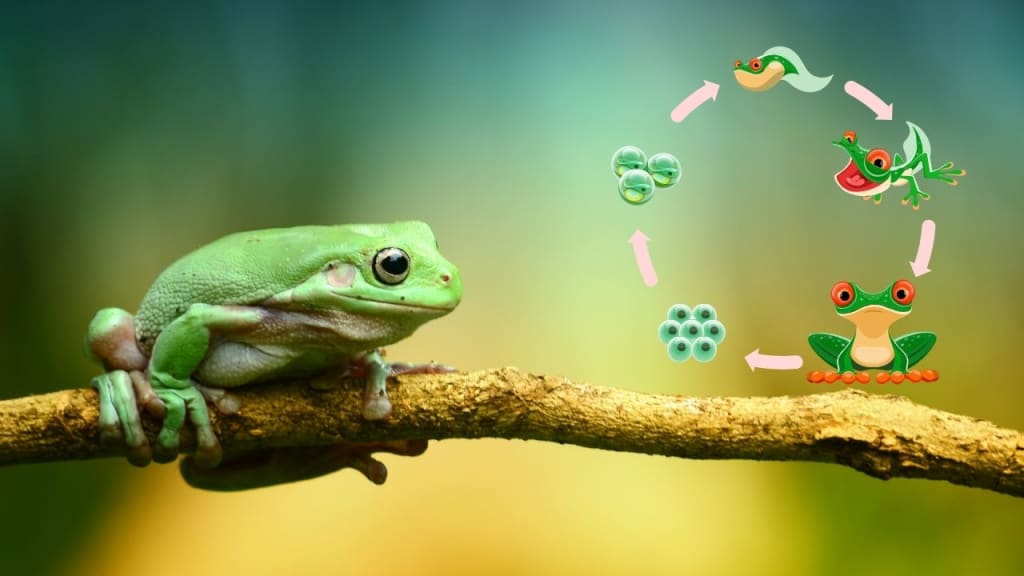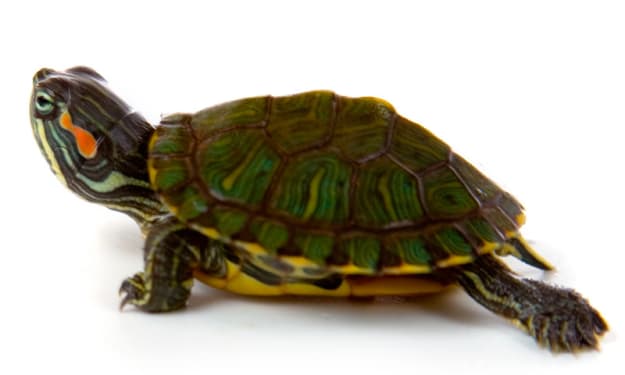The Fascinating Life Cycle of a Frog
A Comprehensive Explanation

The existence cycle of a frog is a first rate adventure of transformation, characterised by a series of distinct ranges that show off the wonders of nature. From a tiny, gelatinous egg to a totally advanced grownup frog, this manner is each intriguing and essential to the stability of ecosystems. In this comprehensive guide, we will delve into the problematic info of the frog's lifestyles cycle, losing light on its various levels and the amazing diversifications that enable frogs to thrive in diverse environments.
Understanding the importance of frogs in the surroundings
Before we dive into the specifics of a frog's existence cycle, it's vital to understand the crucial function those amphibians play in our ecosystems. Frogs are often taken into consideration indicator species, that means that their presence or absence can provide treasured insights into the health of an ecosystem.
Here are a few reasons why frogs are so essential:
1.Bioindicators:
Frogs are fairly touchy to modifications of their environment, specifically water best. Their permeable skin makes them at risk of pollutants, making them tremendous signs of environmental fitness.
2.Predator-Prey Relationships:
Frogs are both predators and prey in various ecosystems. They assist manage insect populations, such as pests like mosquitoes, whilst also serving as a meals source for plenty animals, which includes birds and snakes.
3.Nutrient Cycling:
Adult frogs make a contribution to nutrient cycling by means of eating insects and different invertebrates, consequently returning vital vitamins to the environment after they excrete waste.
4.Biodiversity:
Frogs are especially various, with over 7,000 species global. Their presence contributes to the general biodiversity of their habitats.
Now that we've got installed the ecological importance of frogs, let's explore their existence cycle in element.
The Four Distinct Stages of a Frog's Life Cycle
A frog's existence cycle is split into four main levels: egg, tadpole, metamorphosis, and grownup. Each level is marked through specific traits and variations that allow frogs to live on and thrive of their specific habitats.
1. Egg Stage
The existence cycle of a frog starts while grownup frogs interact in amplexus, that is a shape of mating wherein the male frog clasps the woman from in the back of. During this procedure, the lady releases her eggs, which are then fertilized by way of the male. The fertilized eggs are generally laid in water or moist environments, as they require water to expand properly.
2. Tadpole Stage
Once the eggs are laid, they undergo speedy improvement, and inside a few days, they hatch into tadpoles. Tadpoles are aquatic larvae that have tailored to existence in the water. They possess a tail for swimming and gills for breathing underwater. During this degree, tadpoles mostly feed on algae and detritus found of their aquatic habitats.
Tadpoles are vulnerable to predation, and their survival relies upon on warding off aquatic predators inclusive of fish and insects. To defend themselves, tadpoles regularly have a camouflage shade and generally tend to cover among aquatic flora.
3. Metamorphosis
The metamorphosis level is one of the maximum brilliant aspects of a frog's lifestyles cycle. During this segment, the tadpole undergoes a sequence of dramatic changes to transform into an adult frog. These changes are essential because person frogs are adapted to a terrestrial life-style.
One of the maximum sizeable variations during metamorphosis is the improvement of hind legs. As the tadpole grows, it absorbs its tail and reabsorbs its gills, replacing them with lungs for respiratory air. The frog's digestive gadget also undergoes adjustments to deal with its new weight loss program, if you want to encompass insects and other small prey.
Metamorphosis is a critical duration for the frog, and the timing can vary depending on elements like species, temperature, and meals availability. Once the metamorphosis is complete, the frog emerges from the water onto land as a juvenile frog, often called a froglet.
4. Adult Stage
In the grownup stage, the frog has completely transitioned to a terrestrial life-style. It possesses all of the traits usually related to frogs, which include sturdy hind legs for leaping, webbed toes for swimming, and a protruding tongue for catching prey.
Adult frogs are particularly adaptable and might inhabit a extensive variety of environments, from forests and grasslands to wetlands and urban regions. They are carnivorous, feeding on insects, small invertebrates, and, in some cases, even small vertebrates.
Adult frogs play a crucial function in controlling insect populations, which helps maintain the stability of ecosystems. They are also an crucial part of the meals chain, serving as a food source for numerous predators, such as birds, snakes, and mammals.
Adaptations and Survival Strategies
Throughout their lifestyles cycle, frogs have evolved several great variations and survival strategies that enable them to thrive in numerous environments. These diversifications are a testament to the wonders of evolution:
1.Camouflage:
Tadpoles regularly have camouflage coloration that enables them combination into their surroundings, making it greater difficult for predators to identify them.
2.Toxicity:
Some frog species, consisting of poison dart frogs, are highly toxic. Their brilliant shades serve as a warning to potential predators that they're poisonous and should not be ate up.
3.Hibernation:
In cold climates, a few frog species hibernate at some point of the winter months. They burrow into the floor or seek safe haven in our bodies of water to live to tell the tale freezing temperatures.
4.Vocalizations:
Male frogs are known for their special calls, which they use to draw ladies at some stage in the breeding season. These calls can also serve as territorial alerts and assist set up dominance.
5.Buccal Pumping:
Frogs use a unique approach called buccal pumping to pressure air into their lungs. They near their nostrils and push air into their lungs via using their mouth hollow space, letting them breathe whilst preserving maximum of their body submerged.
Factors Affecting the Frog's Life Cycle
Several environmental elements and human activities can impact the lifestyles cycle of frogs. Understanding those elements is important for conservation efforts:
1.Habitat Destruction:
The destruction of wetlands and forests because of urbanization and agriculture can cause the lack of suitable breeding and living environments for frogs.
2.Pollution:
Chemical pollution, along with insecticides and fertilizers, can contaminate the water in which frogs lay their eggs and develop as tadpoles. This pollutants can have adverse outcomes on frog populations.
3.Climate Change:
Altered climate patterns and temperature changes can affect the timing of breeding and metamorphosis, probably disrupting the synchronization among frogs and their environment.
4.Invasive Species:
The creation of non-local species, such as predatory fish, can lead to multiplied predation on frog eggs and tadpoles.
5.Disease:
Frogs are susceptible to diseases like chytridiomycosis, which has brought on declines in amphibian populations global.
Conservation efforts are important to defend frogs and their habitats. These efforts encompass habitat healing, pollution control, and the introduction of protected areas to guard those charming creatures.
Conclusion
The existence cycle of a frog is a fascinating journey of transformation, adaptation, and survival. From the delicate eggs laid in aquatic environments to the completely evolved person frogs that inhabit numerous landscapes, each level is a testament to the wonders of nature's design. Frogs play essential roles in ecosystems as each predator and prey, and they're essential signs of environmental health






Comments
There are no comments for this story
Be the first to respond and start the conversation.